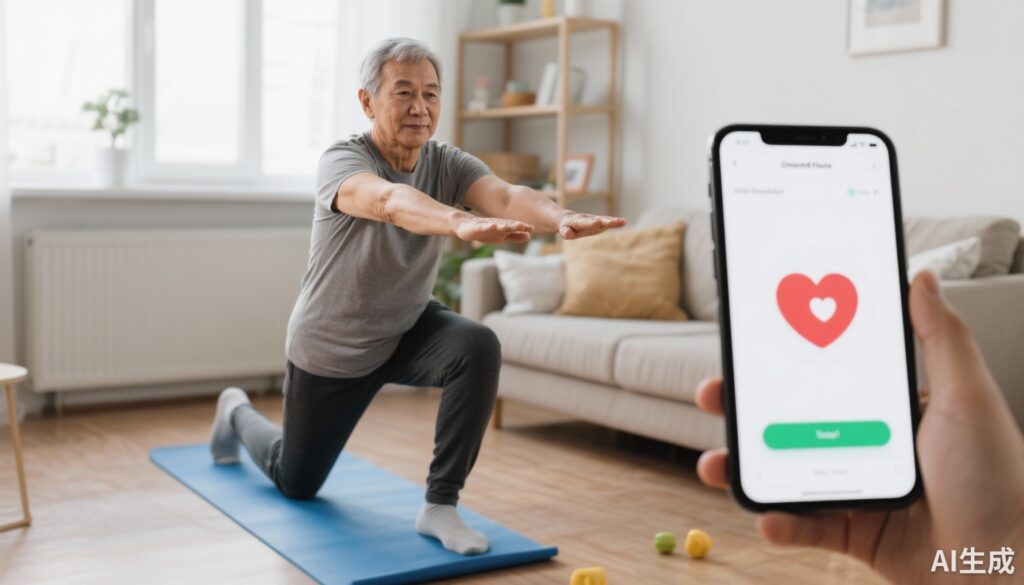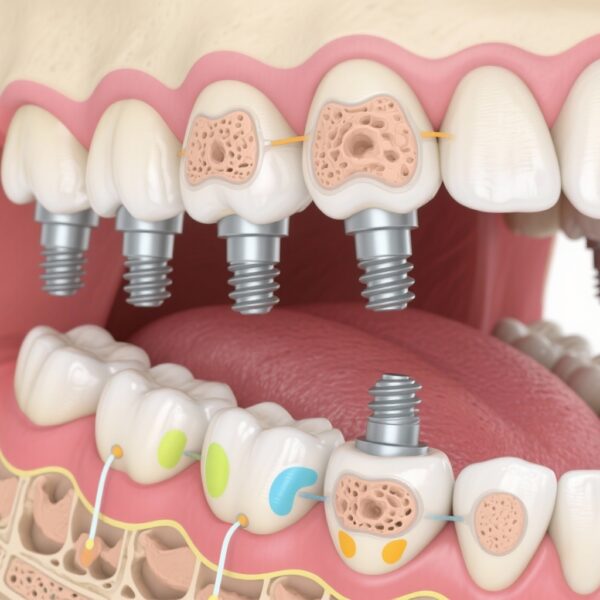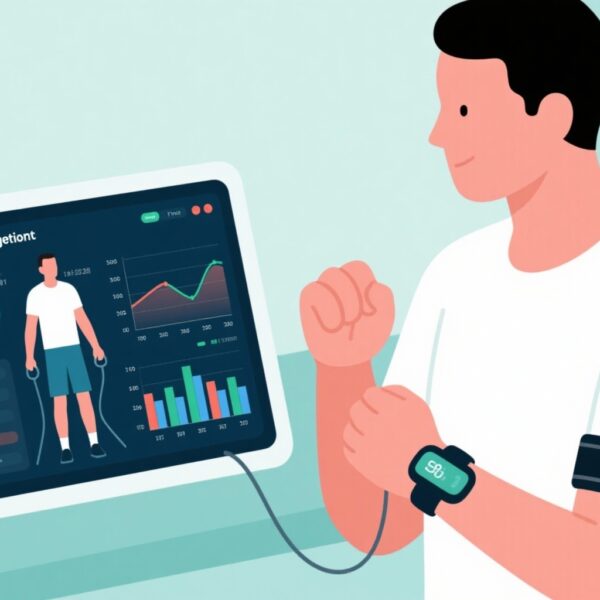Highlight
- X-CircuiT, a smartphone-guided multi-component exercise program, is non-inferior to conventional telephone-guided exercise in improving cardiorespiratory and muscular fitness in home-based cardiac rehabilitation (HBCR) for patients with coronary artery disease and risk factors.
- Both exercise regimens significantly improved peak oxygen uptake and muscular endurance without adverse events over 12 weeks.
- No significant differences were found regarding health-related quality of life, self-efficacy, or exercise adherence between the two interventions.
Study Background
Coronary artery disease (CAD) remains a leading cause of morbidity and mortality worldwide. Cardiac rehabilitation (CR) is a key evidence-based intervention post-CAD to improve functional capacity and reduce recurrent cardiovascular events. The global COVID-19 pandemic and geographical or mobility limitations have increased reliance on home-based cardiac rehabilitation (HBCR) programs. However, optimal exercise modalities for HBCR remain under investigation. Multi-component exercise programs that integrate various fitness elements and leverage digital platforms offer promising alternatives to conventional, often telephone-guided, exercise prescriptions.
Study Design
This randomized controlled non-inferiority trial was conducted at Xiangya Hospital, China, between April and December 2020. The study enrolled 54 patients with established CAD and associated risk factors (CADRF), randomized equally into two groups: the intervention group received smartphone-guided Xiangya Hospital Circuit Training (X-CircuiT), a structured multi-component exercise program; the control group received conventional exercise (ConEx) guided via telephone calls. The intervention duration was 12 weeks.
Primary endpoints focused on cardiorespiratory fitness, measured by peak oxygen uptake (VO2peak), and muscular fitness, evaluated through the 30-second arm curl and chair stand tests. The trial predefined non-inferiority margins as 2.17 mL/kg/min for VO2peak, 2.70 repetitions for arm curls, and 1.23 repetitions for chair stands. Secondary outcomes included VO2 pulse, ventilatory threshold VO2, balance, flexibility, body mass index, health-related quality of life (HRQoL), self-efficacy, physical activity levels, safety, and adherence to exercise.
Key Findings
The median age of participants was 53 years with 37% females, and all completed the 12-week intervention without adverse events.
Both groups demonstrated significant improvements in cardiorespiratory fitness and muscular endurance. Specifically, there was no statistically significant difference between X-CircuiT and ConEx groups in increasing VO2peak (mean difference -0.13 mL/kg/min; 95% confidence interval [CI], -1.76 to 1.50), arm curl repetitions (0.21 reps; 95% CI, -1.35 to 1.77), and chair stand repetitions (1.30 reps; 95% CI, -0.18 to 2.77). All 95% CIs fell entirely within the a priori non-inferiority margins.
Secondary outcomes including VO2 pulse, ventilatory threshold VO2, balance, flexibility, and body mass index showed no significant between-group differences. Patient-reported outcomes such as HRQoL, self-efficacy, and exercise adherence were similarly improved and comparable in both groups without statistically significant differences (all p > 0.05).
No adverse events related to either exercise protocol were reported, underscoring safety in the HBCR setting.
Expert Commentary
This trial provides compelling evidence supporting the non-inferiority of X-CircuiT compared to standard ConEx in home-based cardiac rehabilitation for patients with CAD and risk factors. The integration of digital smartphone guidance represents a practical advancement in HBCR, potentially enhancing accessibility and patient engagement. The multi-component nature of X-CircuiT, combining aerobic, strength, and flexibility exercises, aligns well with current CR guidelines that recommend comprehensive fitness enhancement.
The trial’s randomized design and clearly defined non-inferiority margins strengthen the validity of findings. Nevertheless, the relatively small sample size and single-center design may limit generalizability. Additionally, the median age of 53 years skews younger than some typical CR populations, which may affect extrapolation to older patients with multiple comorbidities.
Future research should explore longer-term outcomes, adherence sustainability, and comparative cost-effectiveness. Integration of wearable sensors and artificial intelligence could further personalize exercise protocols.
Conclusion
X-CircuiT, a smartphone-guided multi-component exercise regimen, is safe and non-inferior to conventional telephone-guided exercise in improving cardiorespiratory and muscular fitness in HBCR for CAD patients with risk factors. This approach offers a viable alternative or supplement to existing HBCR programs, potentially improving access and patient adherence through digital health strategies.
Funding and Trial Registration
The study was registered under ChiCTR2000032451. Details regarding funding sources were not disclosed in the report.
References
1. Gong X, Ye Q, Zhang W, Shen Y, Cao Z, Dun Y, Liu S. X-CircuiT and conventional exercise in home-based cardiac rehabilitation for patients with coronary artery disease and risk factors: a randomized controlled non-inferiority trial. Ann Med. 2025 Dec;57(1):2558124. doi: 10.1080/07853890.2025.2558124. PMID: 40947912; PMCID: PMC12439806.
2. Anderson L, Oldridge N, Thompson DR, et al. Exercise-Based Cardiac Rehabilitation for Coronary Heart Disease: Cochrane Systematic Review and Meta-Analysis. J Am Coll Cardiol. 2016;67(1):1-12.
3. Thomas RJ, Beatty AL, Beckie TM, et al. Home-based cardiac rehabilitation: A scientific statement from the American Association of Cardiovascular and Pulmonary Rehabilitation, the American Heart Association, and the American College of Cardiology. J Am Coll Cardiol. 2019;74(1):133-153.



